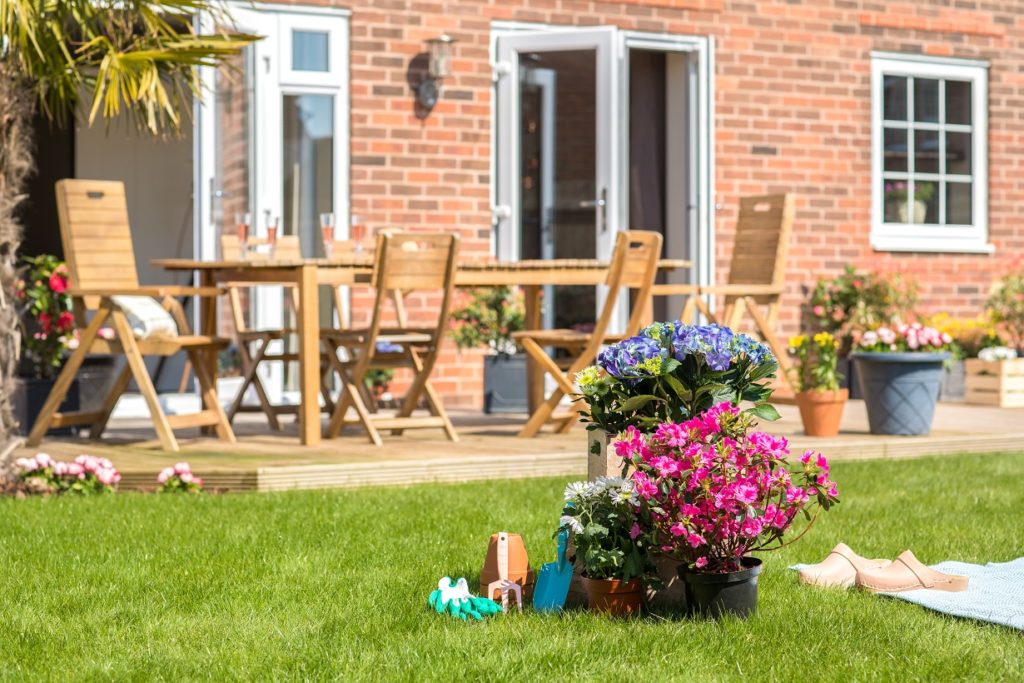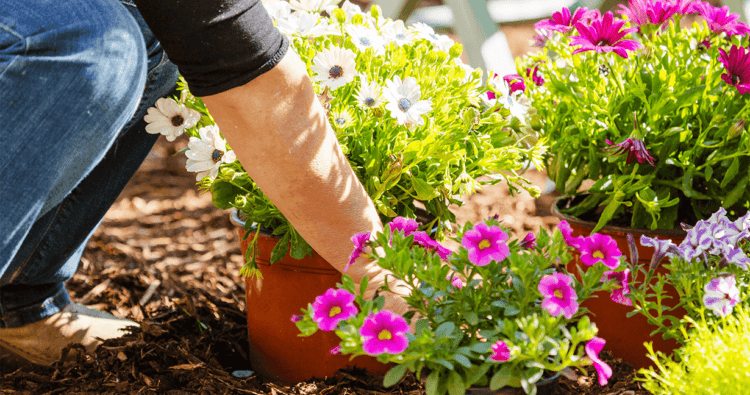
People say that first impressions count and if you want to make the right one, your front garden will need some attention. If you’ve recently bought a new build property, you may have concentrated your attention on getting the interior looking as you wish. Once this is done, it could be time to start planning what you want to achieve with your front garden.

Create something beautiful
A front garden has a different purpose to a back garden. It’s not generally a place to relax in. Instead, it’s a snapshot to be enjoyed as you go to and from your home. It will also be admired by your neighbours and visitors much more than your back garden, which is often only glimpsed by those who enter your home.
A well-kept front garden will also add “kerb appeal” and value, which is important should you ever want to sell your home. After all, first impressions count.

Get inspired
It can be helpful to have a walk around your development and see other garden designs. Are there any that you particularly like? What elements could you incorporate into your garden? You could also benefit from paying a visit to a flower show or two, reading a few gardening magazines and looking online for inspiration.
Think about parking
When it comes to your drive, there are lots of different hard landscaping options available to you – gravel, block paving and concrete to name just a few. You probably won’t want your front garden to look like a car park, so even if you need parking for several cars, consider ways you can add planting.
You could add a row of thyme between the cars or have planting that you park on top of. Not all plants will cope with being temporarily under a car, so opt for varieties such as Bugle (Ajuga reptans) and Creeping Jenny (Lysimachia nummularia).
You could add a hedge to separate your garden from your neighbours. In the same way that flowering plants attract bees, hedges are also good for wildlife, while they also filter the air too.
If positioned right, a hedge can hide your car from view when you look out of your front window. Or if you’d prefer a fence, you could add climbing plants like Blue Bird cultivars (Clematis macropetala) or Climbing Hydrangea (Hydrangea anomala subsp. petiolaris) for greenery.
Simplicity wins
When you’re designing your front garden, you might be best opting for symmetry and straight lines, with as little clutter as possible. Two or three colours in your planting can be enough, at least to begin with. You may want to include a Winter Sweet shrub (Chimonanthus praecox). It has lemon star-shaped flowers and a honeysweet fragrance and can be great against a wall or fence. Just make sure it gets plenty of sun. Pots and raised flower beds can be a great option, whether you use them to house plants, shrubs or trees.

Do you need grass?
If you only have space for a small patch of lawn, it might be easier to forego it completely or replace with artificial grass to save you from having to mow it. Lavender is popular in small gardens, especially Lavandin (Lavandula x intermedia) as it’s the most fragrant variety. For low maintenance pots and borders, you may want to consider English bluebells (Hyacinthoides non-scripta), Marmoratum (Arum italicum subsp.) and Jack Frost (Brunnera macrophylla).
Trying to create a countryfied garden overnight can be a mammoth task. However, there’s no reason why it can’t be a place that birds and insects congregate to, if you have the right planting.



